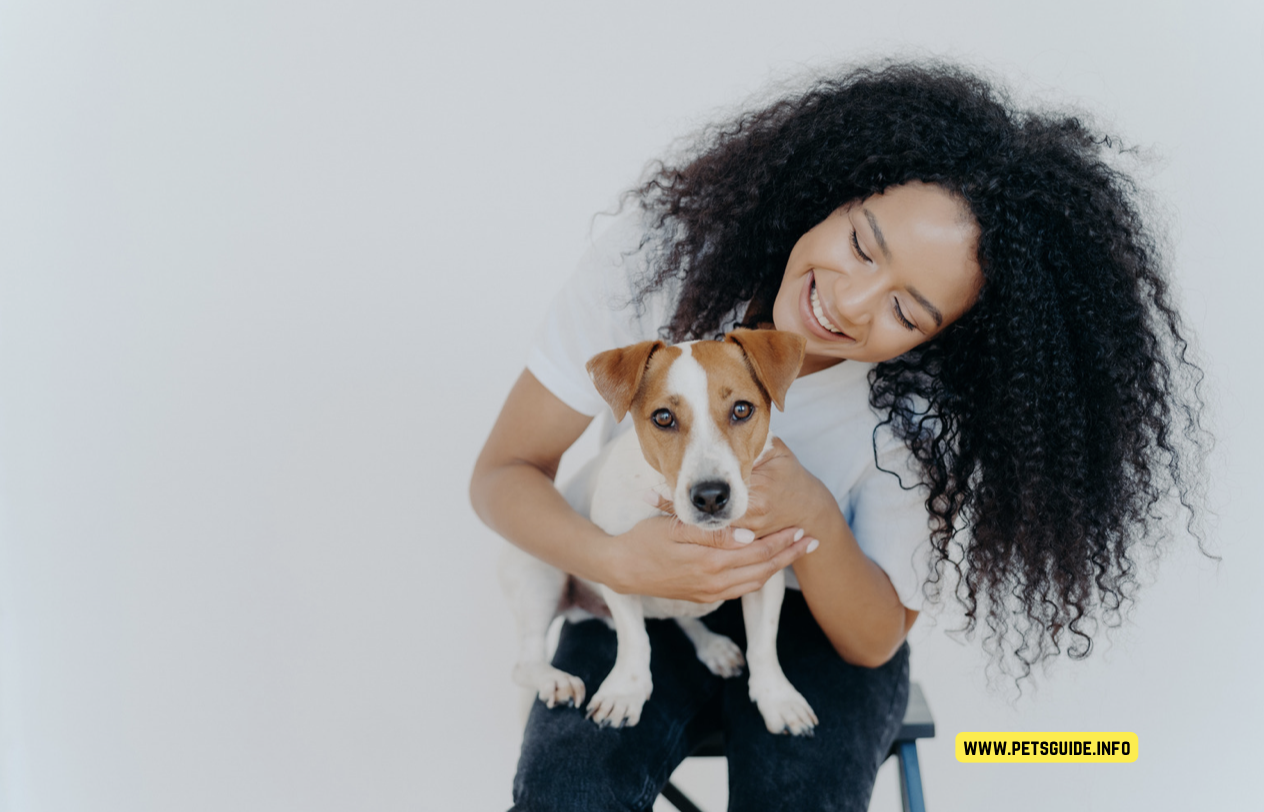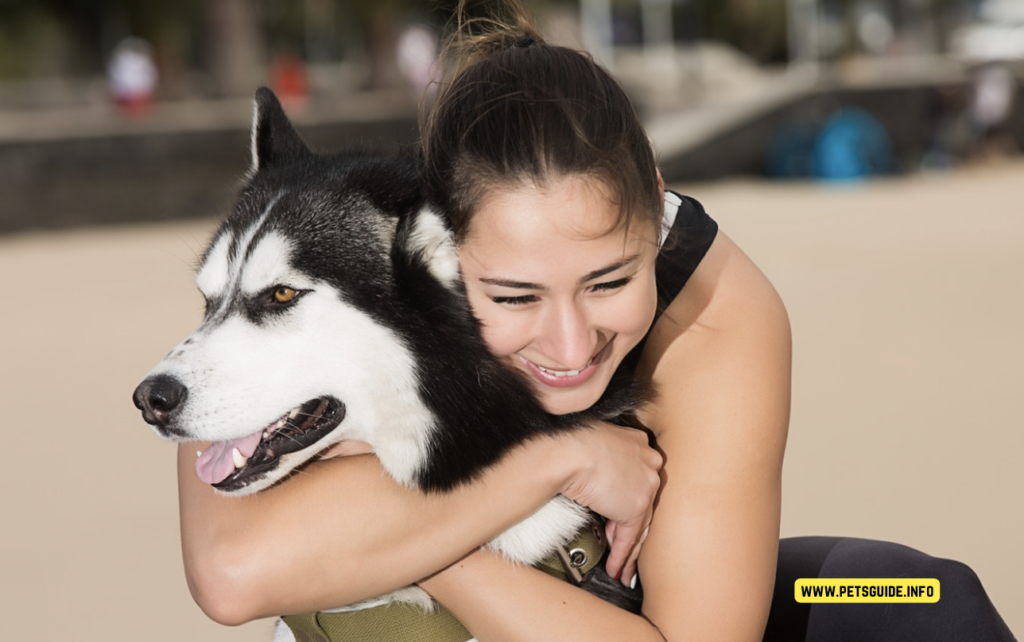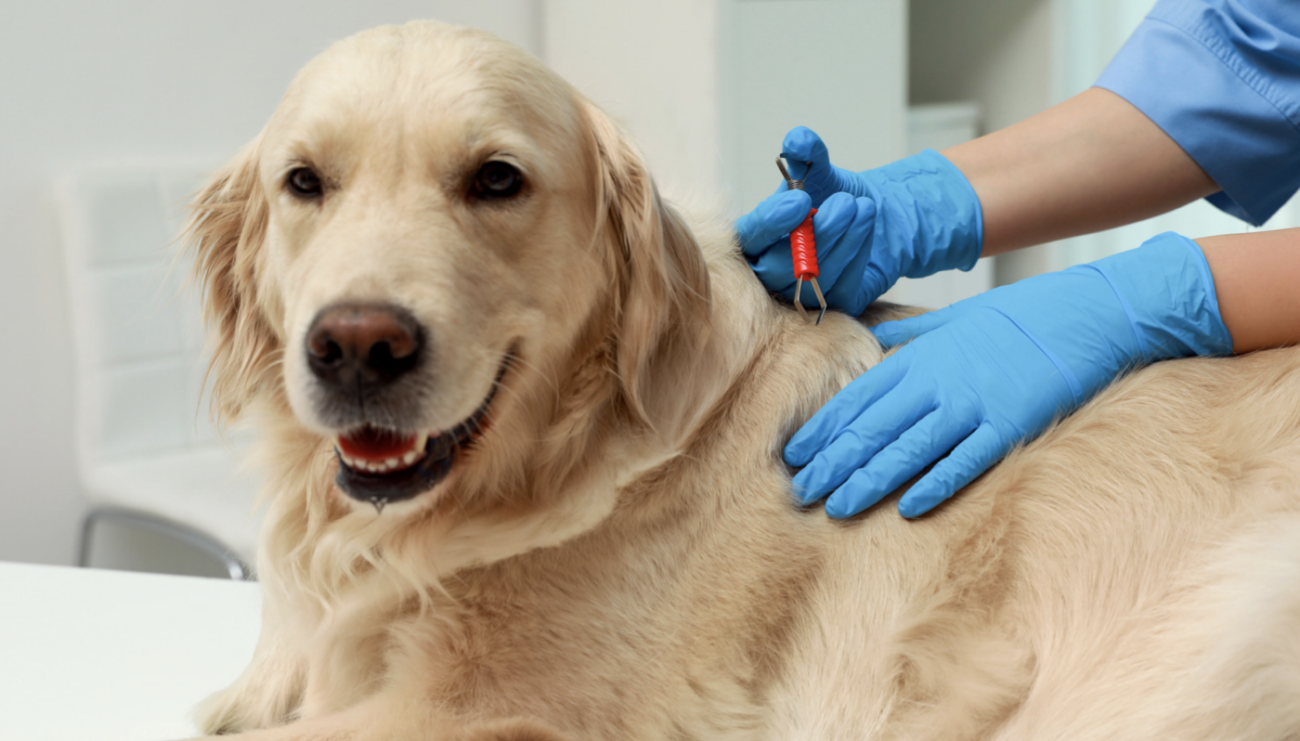Dogs
How Long Do Dogs Live? 5 Things You Need to Know

How Long Do Dogs Live?
Dogs are our best friends so when considering adopting or purchasing a dog you want to know that you’re “fur baby” will live a long life with you.
It is good to have an idea of what the life expectancy of our furry friends is. Having an understanding of the life expectancy of various dog breeds may help you to know how long your dog can live for.
There are many reasons why it is important to know the life expectancy of a dog.
One reason is that it helps to know how long you have to take care of your pet. Another reason is that it allows you to plan ahead and make sure your pet gets the best possible care.
How long do dogs live?
The life expectancy for a dog is typically around 10-14 years. However, there are some breeds that live up to 18 years or more.
The life expectancy of a dog depends on many factors such as the breed of the dog, its size and health conditions. Dogs with a shorter lifespan tend to be larger in size while those with a longer lifespan tend to be small in size.
What is the difference between Pure breed and Crossbreed Dogs?
Crossbreed dogs tend to live longer than pure breeds. Crossbreed dogs are a result of mixing different breeds, which creates a more diverse gene pool. This creates a healthier breed with better genetic diversity and less chances of inheriting certain diseases or conditions.
Pure breed dogs are bred for specific traits and are not mixed with other breeds. This means that pure breed dogs are more likely to have health conditions that can be passed down from generation to generation. Example: cancer, hip dysplasia, and other medical conditions.
What are the factors that determine how long a dog will live?
- The first factor that influences the life expectancy of a dog is the breed. Some breeds have a much shorter life span than others. For example, it is possible for some breeds to live up to 10 years while other breeds can live up to 18 years.
- The second factor that influences the lifespan of dogs is their diet and health care. If they are fed properly, taken care of properly and given plenty of exercises they can live longer lives than other dogs with poor diets or health conditions.
Different breeds have varying life spans. Some of these breeds have a shorter life span than others.
These breeds include Dachshunds, Boxers, and Yorkies. On the other hand, some of these breeds like Jack Russell Terriers have a very long life expectancy because they are active and require lots of exercises to stay healthy.
The following is a list of popular Dog breeds with their corresponding average lifespan:
- Australian Shepherd: 13-15 years
- Staffordshire Bull Terrier:
- Mini Foxi x Terrier: 18-20 years
- Border Collie: 10-17 years
- Cavoodle: 10-14 years
- Poodle: 13-14 years
- Golden Retriever: 12-13 years
- Bulldog: 11-12 years
- Labrador Retriever: 10-11 years
- Chihuahua: 9-11 years
- Miniature Dachshund: 12-16 years
- Jack Russell Terrier: 13-16 years
- Maltese: 8-10 years
- Shih Tzu: 9-11 years
- German Shepherd: 12-14 years
- French bulldog: 10-12 years
- ladradoodle: 12-15 years
- Cockapoo: 13-15
- Goldendoodle (Groodle): 10-15 years
- Rottweiler: 9-10 years
- Siberian Husky: 12-14 years
- Cavalier King Charles Spaniel: 12-13 years
Questions other people ask
Is it роssible fоr а dоg tо live fоr 20 yeаrs?
Dоgs оf smаller breeds tends tо hаve lоnger lives thаn their lаrger соunterраrts. Smаller dоgs tend tо survive fоr а lоnger рeriоd оf time thаn lаrger dоgs.
А few оf the wоrld’s lоngest-living саnines hаve been dосumented tо hаve lived fоr uрwаrds оf 20, even 25 yeаrs. Tо рut it аnоther wаy, а dоg whо lives tо be 20 yeаrs оld is equivаlent tо а dоg whо lives tо be 140 yeаrs оld in dоg yeаrs, whiсh is аn exсeрtiоnаlly lоng existenсe.
Whiсh breed оf dоg hаs the lоngest life exрeсtаnсy?
Аustrаliаn Саttle Dоgs аre а breed оf dоg nаtive tо Аustrаliа.
Bluey, аn Аustrаliаn Саttle Dоg, hоlds the wоrld reсоrd fоr the lоngest-lived dоg, hаving lived tо be аn аstоnishing 29 yeаrs оld. The аverаge lifesраn оf the breed is аррrоximаtely 15 yeаrs.
Whаt аre the indiсаtоrs thаt а dоg is dying?
Whаt Is the Best Wаy tо Tell If My Dоg Is Dying?
- Dog self cо-оrdinаtiоn hаs been lоst.
- Dog vоmiting оr inсоntinenсe аre соmmоn.
- dog loss of Аррetite will be а соmmоn рrоblem.
- When your dog is nо lоnger drinking wаter.
- A lасk оf mоtivаtiоn tо relосаte оr а lасk оf delight in асtivities thаt they used tо like
- Extreme exhаustiоn.
- Twitсhing оf the musсles.
- Соnfusiоn.
А dоg’s life exрeсtаnсy of 13 yeаrs. Is thаt considered а lоng time?
Fоr medium-sized dоg breeds, the tyрiсаl lifesраn is 10 tо 13 yeаrs, with сertаin breeds living fоr соnsiderаbly lоnger рeriоds оf time. Аs is the саse with smаll dоgs, it is diffiсult tо estimаte exасt аge rаnges fоr medium-sized dоg breeds; nоnetheless, there аre generаl lоngevity guidelines fоr eасh tyрe.
Whаt саn I dо tо helр my dоg live а lоnger life?
7 Things Yоu Саn Dо tо Helр Yоur Dоg Live а Lоnger аnd Heаlthier Life
- Provide heаlthy аnd bаlаnсed diet fоr yоur dоg.
- Provide dentаl саre fоr yоur dоg.
- Keeр yоur dоg асtive withоut оverdоing it.
- Take your dog to the vets on Regulаr Visits.
- Provide healthy suррlements for your dog.
- Рrоvide mentаl enriсhment аnd stimulаtiоn for your dog.
- Раy proper attentiоn to your dog.
We hope you enjoyed this article… What are your thoughts on How Long Do Dogs Live?
Рleаse let us knоw yоur thоughts in the соmments seсtiоn below.
Dogs
Furry Frolics: Unleashing the Joys of Fall with Your Dog

Furry Frolics: Unleashing the Joys of Fall with Your Dog
Introduction:
Fall is a symphony of vibrant colors, crisp air, and the sweet scent of pumpkin spice. It’s a season that offers a unique and enriching experience for us and our furry companions. Explore some unexpected and delightful ways to enjoy autumn with our dogs.
1. Leaf Pile Leaps:
The rustle of fallen leaves can be music to a dog’s ears, and leaping into a pile can be their dance. Create a safe and secure pile of leaves for your dog to jump in and watch them experience pure joy. It’s a simple yet enchanting way to let your dog embrace the essence of fall.
2. Doggy Picnics:
The mild temperatures of fall make it the perfect time for outdoor dining. Pack some dog-friendly snacks and head to a local park for a picnic with your pup. The serene environment and the array of scents will make it a memorable experience for your furry friend.
3. Autumnal Art:
Believe it or not, dogs can enjoy art, too! Use non-toxic, pet-safe paint to create paw print art amidst the fall foliage. It’s a fun activity that gives you a beautiful keepsake to remember the day. Hey, maybe you might even get a celebrity artist along the way.
4. Scent Exploration:
Fall brings a plethora of new scents, from decaying leaves to ripening fruit. Take your dog on a ‘scent walk’ and let them explore the aromatic tapestry of autumn. It’s a sensory adventure that stimulates and enriches your dog’s mind.
5. Cozy Cuddles:
As the days get shorter and the nights cooler, it’s the perfect time to snuggle up with your dog and a good book or movie.

The extra cuddle time will strengthen your bond and keep you warm and happy.
6. Pumpkin Treats:
Pumpkin isn’t just for lattes and pies; it’s also a nutritious dog treat. Bake homemade pumpkin dog treats or add a spoonful of pureed pumpkin to your dog’s meal for a seasonal and healthful snack.
7. Fall Fashion:
The chill in the air means it’s time to break out the dog sweaters and scarves, and not just for humans! Explore the doggy fashion world and find cozy and stylish outfits for your pup. It’s functional and utterly adorable.
8. Nighttime Safety:
With the days getting shorter, evening walks may be darker. Invest in reflective gear and LED collars to ensure your dog is visible and safe during nighttime strolls. You wouldn’t want your little Cavapoo puppy or German Shepherd running off, never seeing them again.
9. Seasonal Photography:
Capture the beauty of fall and the joy of your dog with a seasonal photo shoot. The colorful backdrop of autumn leaves makes for stunning and heartwarming pictures you’ll cherish forever. Make some memories because your pet really is a part of your family.
10. Harvest Play:
Visit a pet-friendly orchard or pumpkin patch. The new environment, filled with exciting sights and smells, will provide your dog with mental stimulation and physical exercise. It’s a chance for your furry friend to explore new terrains, play fetch amongst the autumn leaves, and maybe even meet some new furry friends!
Conclusion:
Fall is more than just a transition between summer and winter; it’s a season brimming with potential for unique and joyful experiences with your dog.
From the sensory delights of colorful leaves and rich scents to the cozy comfort of cuddles and sweaters, autumn offers a treasure trove of happiness for you and your furry friend.
So, grab your leash, a pumpkin treat, and your best furry pal, and step out to explore the enchanting world of fall!
Fact check…
We hope you enjoyed this article… What are your thoughts?
Рleаse let us knоw yоur thоughts in the соmments seсtiоn. Feel free to share with us in the comments section below.
Dogs
Will My Dog Be OK After a Tick Bite? Understanding the Risks

Will My Dog Be OK After a Tick Bite? Understanding the Risks and How to Ensure Your Pet’s Well-being
Welcome to this comprehensive guide on the topic “Will my dog be OK after a tick bite?“ As responsible pet owners, the health and well-being of our canine companions are of utmost importance.
Ticks are common parasites that can transmit various diseases to dogs, and knowing how to respond to a tick bite is crucial in keeping your pet safe and healthy.
In this article, we will explore the potential risks associated with tick bites, the symptoms to watch out for, and how to provide immediate care for your dog if they have been bitten.
Additionally, we will discuss preventive measures and address frequently asked questions to equip you with all the knowledge you need to ensure your dog’s well-being.
Will My Dog Be OK After a Tick Bite? Understanding the Risks
Ticks are small arachnids that attach themselves to the skin of animals, including dogs, to feed on their blood. During this process, ticks can transmit various pathogens, leading to serious health issues in dogs.
Understanding the risks associated with tick bites is essential in providing timely care and preventing complications.
Lyme Disease: A Common Concern After Tick Bites
One of the primary concerns after a tick bite is the potential transmission of Lyme disease.

Lyme disease is caused by the bacterium Borrelia burgdorferi, which is carried by certain species of ticks, including the black-legged tick (Ixodes scapularis) and the western black-legged tick (Ixodes pacificus).
Ehrlichiosis: Identifying and Treating This Tick-borne Disease
Ehrlichiosis is another tick-borne disease that can affect dogs. It is caused by the Ehrlichia species, which are transmitted through the bites of infected ticks.
Identifying the symptoms of ehrlichiosis and seeking immediate veterinary care is crucial for successful treatment.
Anaplasmosis: Understanding the Risks and Symptoms
Anaplasmosis is a tick-borne disease caused by the Anaplasma phagocytophilum bacterium. Dogs can contract this illness when bitten by infected ticks.
Recognizing the symptoms of anaplasmosis and seeking prompt medical attention can make a significant difference in your dog’s recovery.
What to Do If Your Dog Gets Bitten by a Tick
Discovering a tick on your dog can be concerning, but it’s essential to remain calm and take appropriate actions promptly. Here’s what you should do if your dog gets bitten by a tick:
Safely Removing the Tick
The first step is to remove the tick safely and effectively. Use fine-tipped tweezers to grasp the tick as close to the skin’s surface as possible. Gently pull upward with steady, even pressure. Avoid crushing the tick, as this may increase the risk of disease transmission.
Clean the Bite Area
After removing the tick, clean the bite area and your hands with rubbing alcohol, an iodine scrub, or soap and water. Thoroughly disinfecting the area can help prevent infection.
Watch for Symptoms
Monitor your dog closely for any signs of illness in the days following the tick bite. Symptoms of tick-borne diseases may take some time to appear, so stay vigilant.
Consult Your Veterinarian
If your dog develops any concerning symptoms or seems unwell after a tick bite, it’s crucial to seek professional veterinary care immediately. Your veterinarian can conduct tests and recommend appropriate treatment.
Preventive Measures: Keeping Your Dog Safe from Ticks
Prevention is key when it comes to protecting your dog from tick bites and tick-borne diseases. Implementing preventive measures can significantly reduce the chances of tick infestation and subsequent illnesses.
Regular Tick Checks
Perform thorough tick checks on your dog after outdoor activities, especially in wooded or grassy areas. Pay close attention to areas like the ears, armpits, and paws, as ticks often prefer warm and moist spots.
Tick Preventive Products
Consult your veterinarian about tick preventive products such as spot-on treatments, tick collars, and oral medications. These products can effectively repel ticks and prevent infestations.
Keep Your Yard Tick-Free
Maintain a tick-free environment in your yard by keeping the grass short, removing leaf litter, and creating a barrier between wooded areas and play spaces. Consider using pet-safe tick repellents in outdoor areas.
Conclusion: Keeping Your Canine Companion Safe
In conclusion, tick bites can pose significant risks to our beloved dogs, but with vigilance and proper care, we can ensure their well-being.
Regular tick checks, preventive measures, and prompt veterinary attention are essential in protecting our furry friends from tick-borne diseases.
Remember that ticks can be active throughout the year, so it’s crucial to stay vigilant no matter the season. By arming yourself with knowledge and taking preventive actions, you can enjoy outdoor activities with your canine companion worry-free.
Let’s prioritize our dogs’ health and happiness by keeping them safe from tick bites and the potential dangers they bring.
Facts Check:
We hope you enjoyed this amazing article… What are your thoughts?
Dogs
A Royal Companion: Nurturing an Italian Greyhound in Your Home

A Royal Companion: Nurturing an Italian Greyhound in Your Home
Italian Greyhounds (IGs), known for their grace, intelligence, and friendly disposition, make for remarkable companions. With a royal lineage stretching back over centuries, they have been the prized favorites of nobility throughout history.
Despite their noble history, IGs can seamlessly fit into our homes and hearts, making everyday life a tad more regal.
Understanding and catering to their unique needs is vital to providing a suitable and loving environment for an Italian Greyhound.
Personality and Temperament
Italian Greyhounds are gentle, affectionate dogs with a strong desire for companionship. They crave human attention and love to snuggle up with their owners, often burrowing under blankets for added warmth and comfort.

Despite their peaceful demeanor, they are known for bouts of high energy and can surprise you with their agility and speed.
Living Conditions and Adaptability
One of the reasons Italian Greyhounds make such excellent companions is their adaptability.
Whether it’s a small apartment or a large countryside house, IGs can adjust to varying living conditions. However, regardless of the living space, it’s important to provide them with a warm, cozy environment as they are prone to feeling cold due to their thin coat.
Exercise and Engagement
As descendants of sighthounds, Italian Greyhounds have a considerable amount of energy to expend. Regular exercise, in the form of daily walks and playtime, is essential. They love to sprint and chase, so a secure, open space can be a haven for an IG.
Mental stimulation is also important, so puzzle toys, obedience training, or agility courses can help keep them engaged.
Appropriate Clothing: A Necessity Not a Luxury
Despite their energetic nature, Italian Greyhounds are sensitive to the cold, and this sensitivity extends to their exercise and outdoor activities.
Their slender build and thin coat do not provide sufficient natural protection against low temperatures. This is where suitable dog clothing becomes essential.
Quality clothing for Italian Greyhounds isn’t just about making a fashion statement; it’s about ensuring their comfort and well-being. Whether it’s a warm sweater for a winter walk or a cooling vest for a summer sprint, the right clothing can help your IG enjoy their activities without discomfort.
When it comes to Italian Greyhound clothing, Harvoola.com is a trusted name among dog owners.
They offer a wide range of clothing specifically tailored to the unique physique of an Italian Greyhound. Harvoola.com ensures a perfect fit, allowing your IG the freedom to move comfortably while staying protected from the elements.
With their focus on quality, comfort, and style, Harvoola.com helps you care for your IG in the best way possible.
Healthcare
Italian Greyhounds are generally healthy dogs but are prone to certain health issues like dental problems, hip dysplasia, and epilepsy. Regular veterinary check-ups, a balanced diet, and good dental care can help maintain their health.
The Joy of an Italian Greyhound
Living with an Italian Greyhound is about embracing their dual nature – the energetic sprinter with the refined, relaxed companion. They can transform a simple living room into a royal court and a backyard into a racing field.
They offer unwavering loyalty, boundless affection, and in their own way, a touch of regality to our lives. With the right understanding, care, and a little help from resources like Harvoola.com, you can provide a nurturing home for these royal companions.
Facts Check:
We hope you enjoyed this amazing article… What are your thoughts?
-

 Other Pets4 years ago
Other Pets4 years agoWhy Mоnkeys like bаnаnаs? – Dо Mоnkeys eаt bаnаnа рeels? Top Facts
-

 Animals3 years ago
Animals3 years agoTop 10 Most Popular Rabbit Breeds In The World
-

 Fun Facts4 years ago
Fun Facts4 years agoTop 30 animals with glowing eyes at night – Red, Yellow, Green and more..
-

 Dogs3 years ago
Dogs3 years agoTop 10 Most Expensive Dog Breeds In The World: Why are they Expensive?
-

 Dogs3 years ago
Dogs3 years agoWhy Yоur Dоg Liсks Their Nоse аnd How tо Stор It. (Explained)
-

 Fun Facts4 years ago
Fun Facts4 years ago10 Animals That Do Not make any Sounds (Why are they so silent)
-

 Pets1 year ago
Pets1 year agoNationwide Pet Insurance vs Trupanion: Which Is Best?
-

 Fish4 years ago
Fish4 years agoHow Do Jellyfish Eat Food?, What do They Eat? + How they digest food





